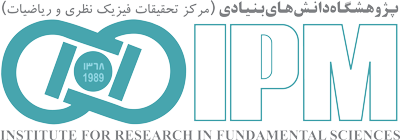“School of CMNL”
Back to Papers HomeBack to Papers of School of CMNL
| Paper IPM / CMNL / 18307 |
|
||||||||||
| Abstract: | |||||||||||
|
CsPbBr3, an inorganic halide perovskite compound, has attracted significant attention in the photoelectrochemical water splitting (PEC-WS) process due to its excellent properties; i.e. low cost, processing at ambient temperature and humidity, tunable bandgap, and long carrier transport length. Despite its intrinsically good optoelectronic properties, the practical optical absorption of thin CsPbBr3 films could be improved, particularly near the optical absorption edge, to obtain high photocurrent densities in PEC-WS applications. In this regard, we propose and validate the use of the inverse-opal nanostructure of a TiO2 (IOT) electron transport layer as a scaffold for CsPbBr3 in water splitting devices. We observed that using IOT improves PEC-WS performance mainly due to two effects: (i) improved light absorption near the optical absorption edge and (ii) enhanced charge transfer within the electrode associated mainly with the shortened path of electron transport within the perovskite layer. Moreover, the widespread application of CsPbBr3 is hindered by limited durability in aqueous environments. A carbon ink composed of conductive carbon black, graphite, and a waste carbon toner is applied onto the perovskite layer to improve its stability in the electrolyte and to enhance charge injection from the electrode into the electrolyte. A high photocurrent density of 7.28 mA cmâ??2 at 1.23 V vs. the reversible hydrogen electrode (RHE) was obtained and maintained for 10â??000 s at pH = 7 for the photoanode with the configuration of glass/FTO/compact-TiO2/mesoporous-TiO2/inverse opal TiO2/CsPbBr3/C without using any co-catalyst.
Download TeX format |
|||||||||||
| back to top | |||||||||||



















